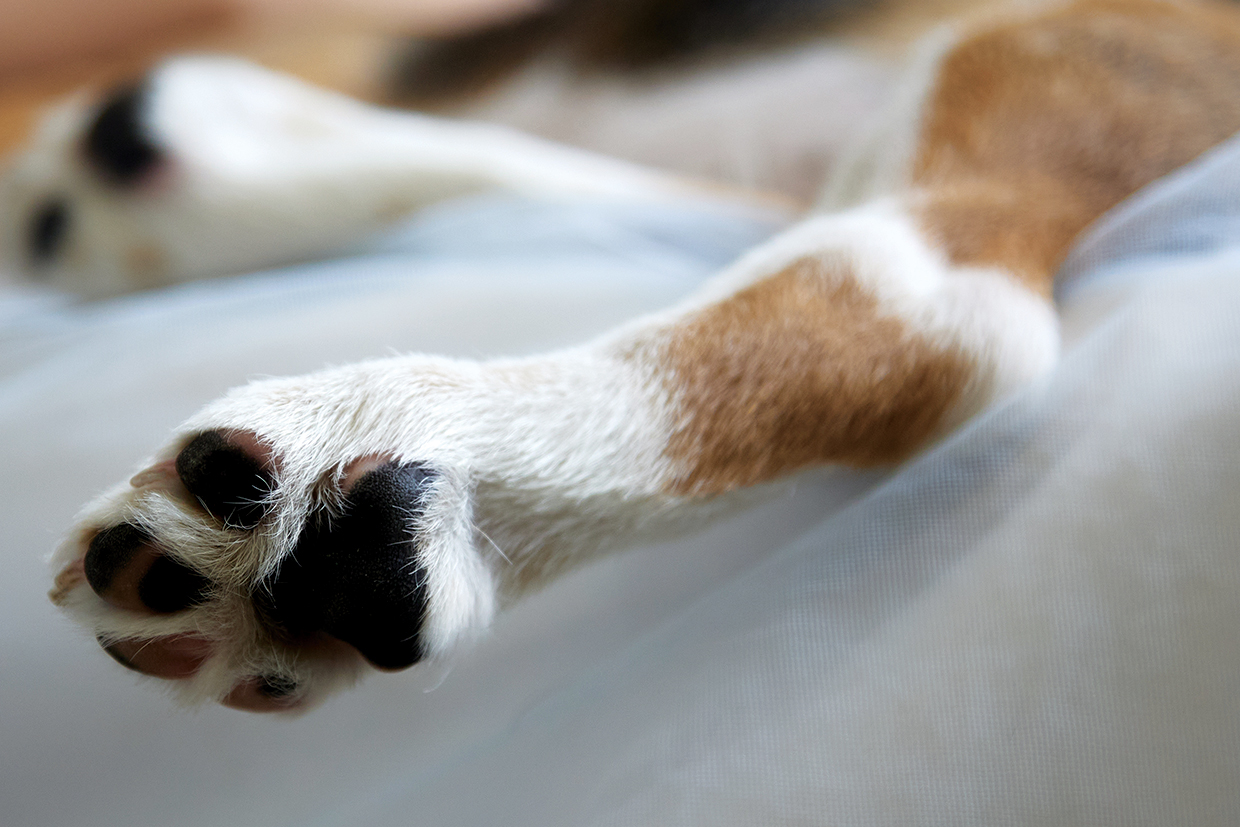Dogs, Cats and Degenerative Joint Disease
Featured in Pet Connection Magazine – April/May 2022 Issue.
By: Jessika, Pet Nutrition & Education Specialist, Biotech Adv. Dip, B.Sc Candidate 2024
Degenerative Joint Disease (DJD) is prevalent in both dogs and cats of all ages – estimated to affect nearly 20% of dogs throughout their lifetime and up-to 90% of cats (over the age of 10).
DJD is a chronic joint disease characterized by the loss of joint cartilage, changes in the joint capsule and new bone formations around the joint. These can lead to various levels of pain and discomfort for dogs and cats. The majority of cases are secondary to an existing Orthopedic Disease – though rare, there are a small subset of animals that develop DJD without pre-existing conditions.

Identifying degenerative joint disease is the first step to managing the disease. Without a proper diagnosis or a working theory, managing the disease becomes increasingly difficult. Diagnosis can be obtained by either an X-ray, CT scan or inspection through exploratory joint surgery. Treatment and management options can be explored once the condition is diagnosed.
The best course of action is a Multimodal Approach which means combining several options to give the best overall result instead of using one single therapy. Non-surgical options will be explored as many pets are either poor candidates for surgery or are at a stage in the disease process where surgery isn’t an option.
The goal with an Integrative Multimodal Approach is to achieve an appropriate level of pain management and improve the pets quality of life. Communicating regularly with your veterinarian will determine if the implemented therapies are sufficient.
Alternative Therapies, also known as Non-Conventional Therapies, are treatments or methods of care that fall outside of traditional veterinary medicine. The most common Alternative Therapies are Physiotherapy, Chiropractic Care, Acupuncture and Homeopathy.
In an Integrative Multimodal Approach, Alternative Therapies are often combined with Conventional Treatments to achieve the desired result. Integrative refers to the combining of both conventional and non-conventional treatments. Complementary options that usually accompany an Integrative Multimodal Approach include Joint Supplementation, Laser Therapy and Pulsed Electromagnetic Field Therapy (PEMF).
When utilizing complementary options, the goal is to reduce inflammation, improve blood flow to an area and trigger the body’s natural healing process. While degenerative joint disease cannot be cured, the body can be supported in the best possible ways to slow down the process and improve quality of life.

Joint Support – Supplements
Joint Supplements can often be broken down into two categories – Cartilage Supportive Products and Anti-inflammatory Products. Glucosamine and chondroitin sulfate are referred to as Chondro Protectants, a cartilage component often harvested from mollusks. These supplements are taken orally and contain necessary components to help the body repair damaged cartilage. In the Anti-inflammatory category, Methyl Sulfonyl Methane (MSM) and Omega-3 fatty acids from small, cold water fish have been found to have anti-inflammatory properties. Cold water fish are one of the most underused supplements available to support Degenerative Joint Disease. Cartilage Supportive Products and Anti-inflammatory Products are safe for both dogs and cats and can be found in combined supplements on the market.
Inflammation Reduction – Laser Therapy
Laser Therapy is a Complementary Therapy often combined with Chiropractic Care and Physiotherapy. Wavelengths of light target photoreceptors within the mitochondria of the cell. This increases cell energy – promoting a faster healing process and reducing inflammation of a targeted area. Treatment time and frequency will vary depending on the severity of the condition and the strength of individual units. While Class 3 lasers are most commonly used for therapeutic purposes, the strength of the lasers within this category do vary and will affect treatment times and frequency.
Pulsed Electromagnetic Field Therapy (PEMF)
Pulsed Electromagnetic Field Therapy (PEMF) is used to send pulses of electromagnetic energy into the targeted area of the body to promote healing and decrease inflammation. It is believed that the PEMF devices can affect the levels of calcium and nitric oxide found in the tissues which influence complex pathways impacting metabolism, inflammation, and tissue growth and repair.
The prevalence of Degenerative Joint Disease in both dogs and cats is increasing – factors like obesity can be controlled whereas genetics cannot. With the countless number of supplements and therapies on the market, the outlook for many pets with a DJD diagnosis is relatively positive once a combination of treatments has been found. It is important to remember that each pet is a unique individual so their treatment plan should reflect this. Do not get discouraged if the first treatment option does not yield the desired results – try again and be flexible. Sometimes it takes adding multiple treatment options before getting exactly what you want. This is often why an Integrative Multi-Modal approach to managing Degenerative Joint Disease is often best.
Iron Will Raw offers a range of nutritional supplements that can help your pet manage degenerative joint disease by reducing inflammation, including Iron Will Raw Concentrated Omega-3 Fish Oil with Vitamin E and North Hound Life Golden Turmeric Super Blend.

